Tag Archives: Revelation
Revelation 13–17 Commentary Notes

Revelation 13
Revelation 13:1–14, On the rise of Luciferian, antichrist New World Order technocratic system and the mark of the beasts. See notes on Isa 25:7.
Revelation 13:1, The beast…the sea. Two possible end time scenarios may explain the setting of this vision.
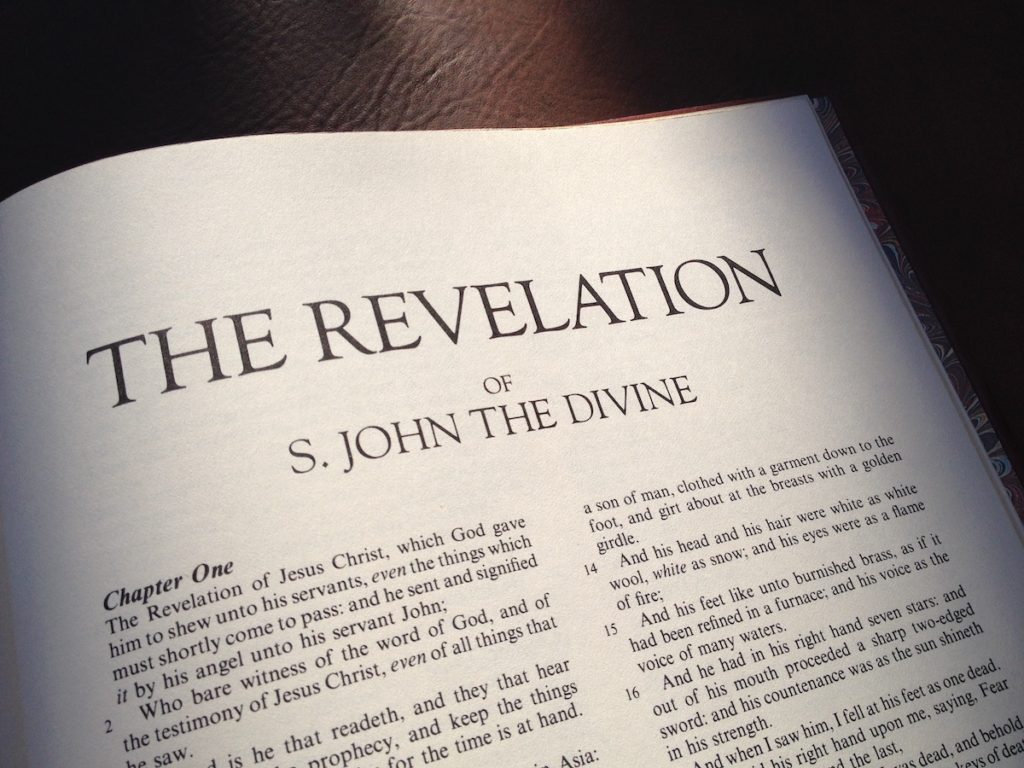
The first scenario is that the beast of Revelation 13 that rises up out of the sea is the end times New World Order, anti-Christ system comprised of the kings of the earth and their armies (see Rev 19:19). This beast is the political and economic branch of the Babylon the Great New World Order system. The metaphor of the sea is a Hebraism meaning “the seas of humanity.” This could be a reference to all the oceans of the earth or just to the Mediterranean Sea, which is in the middle of the earth (the meaning of word Mediterranean) and may symbolically represent all the earth’s oceans. Since all the kings of the earth follows this beast (v. 3), and “all the world” worshipped the dragon who gives authority to the beast (v. 4), it seems that seas is likely a reference to all the seas or oceans of the earth. This beast seems to correspond with the fourth beast of Daniel’s four beast vision (Dan 7:7ff).
The second scenario is that the sea is just the Mediterranean Sea. The island of Patmos from which John received his vision (Rev 1:9) is located just east of Turkey between the Aegean and Mediterranean seas. If this is the case, then the beasts that John sees rising out of the Mediterranean Sea represent localized regional powers and aren’t global in nature. The seven heads being the seven regional empires that have dominated that region over the millennia (Egypt, Babylon, Assyria, Persia, Greece, Rome and the Ottoman Turks) seem to give credence to the validity of this second scenario explaining John’s vision. If this is the case, then the ten horns may be ten end time regional Muslim powers under a caliphate confederacy who conspire together for the destruction of Israel. Perhaps Psalm 83:1–8 is a prophecy pertaining to this. These ten nation of Psalm 83 may be the ten toes of Daniel’s ten-toe prophecy (Dan 2:41–42).
Revelation 13:1, Seven heads and ten horns. The seven heads appear to be the seven “world”-ruling manifestations of this Babylonian beast system down through the ages to the present time (i.e. Egypt, Assyria, neo-Babylon, Persia, Greece, Rome and end times Babylon the Great comprised of all nations [i.e. the New World Order]). The ten horns may be ten global semiautonomous regional governments, which, when combined, comprise all the nations of the earth and make up Babylon the Great. This may be what Daniel saw in the ten toes of the great image of Daniel 2. Perhaps the two legs of that image represent apostate Christianity and Islam—the two great religions of the world, which are in nearly every nation and become semi-united in some bizarre, demonic way. The two legs of Daniel’s image could also represent the first Roman Empire that then broke into the Eastern and Western Roman Empires. The spiritual descendants of the Western Roman Empire is apostate Christianity out of which comes the European and American-based New World Order, which is the head of Babylon the Great. The descendants of the Eastern Roman Empire became the Ottoman Turkish Empire. The fourth beast of Daniel’s four beast vision also had ten horns (Dan 7:7). Daniel speaks of a little horn coming up in the midst of the ten horns, which plucked three of the first horns up by the roots (Dan 7:8). This same horn speaks pompously (Dan 7:8, 11) and makes war against the saints (Dan 7:21, 22, 25) and prevails against them until Yeshua destroys it at his second coming (Dan 7:11, 21, 22). John uses similar language to describe the political and economic beast of Revelation 13:1. This beast also makes war against the saints and overcomes them (Rev 13:7).
Revelation 13:2, The dragon gave him his power. This is the ultimate end-times antichrist system. Also see notes at 2 Thess 2:3–4 where we discuss the parallels between the Man of Sin, Antichrist figure, Isaiah’s prophecy about the fall of Satan (Isa 14), and the Satan-led leader of end times Babylon the Great as prophesied about in this chapter.
Revelation 13:7–8, Every tribe, tongue and nation…all who dwell on the earth. Does this beast have authority over every single heathen on earth, and every last heathen on earth will worship him? In the Scriptures, all and every are sometimes used as hyperbole where exaggeration is used to emphasize a point. (For a discussion of this, see notes at 2 Sam 16:22 and Zech 14:2.)
Revelation 13:8, Whose names. This states that some names aren’t written in the Lamb’s Book of Life. This seems to counter the idea that all humanity’s names are written in the Book of Life, only to be erased when they fail to receive the salvation of the Lamb.
Revelation 13:11, Another beast. This beast is the religious leg of the Babylon the Great New World Order, and comes out of the earth (probably the European or Eurasian continent), since this would be the perspective of the John, the writer. “Out of the earth” could be a reference to the devil and demon spirits coming out of the pit to torment men (i.e. Rev 9:1–11).
Two horns. The religious branch of Babylon has two horns—one that speaks like a lamb and one that speaks like a dragon. Could this be a reference to an ecumenical uniting of apostate Catholic Christianity (with her apostate daughters) and Islam?
Revelation 13:15, The image of the beast. Inanimate objects can be demon possessed.
Revelation 13:16, He. This is a reference to the religious beast. It is this beast who causes all humans to take a mark on their head or hand, in order that they might buy or sell. In other words, the religious beast component of Babylon the Great uses its miraculous power and spiritual deceptions to entice humanity to worship the image of the first or political and economic beast (a cloak for Satanic worship). This false religion beast is behind the effort to kill all those who refuse to worship the image of the beast.
Revelation 13:18, The number of the beast. Which beast is being referred to here—the first or second beast? The first beast would be political figure, while the second beast would be a religious figure.
Continue readingRevelation 9–11 Commentary Notes

Revelation 9
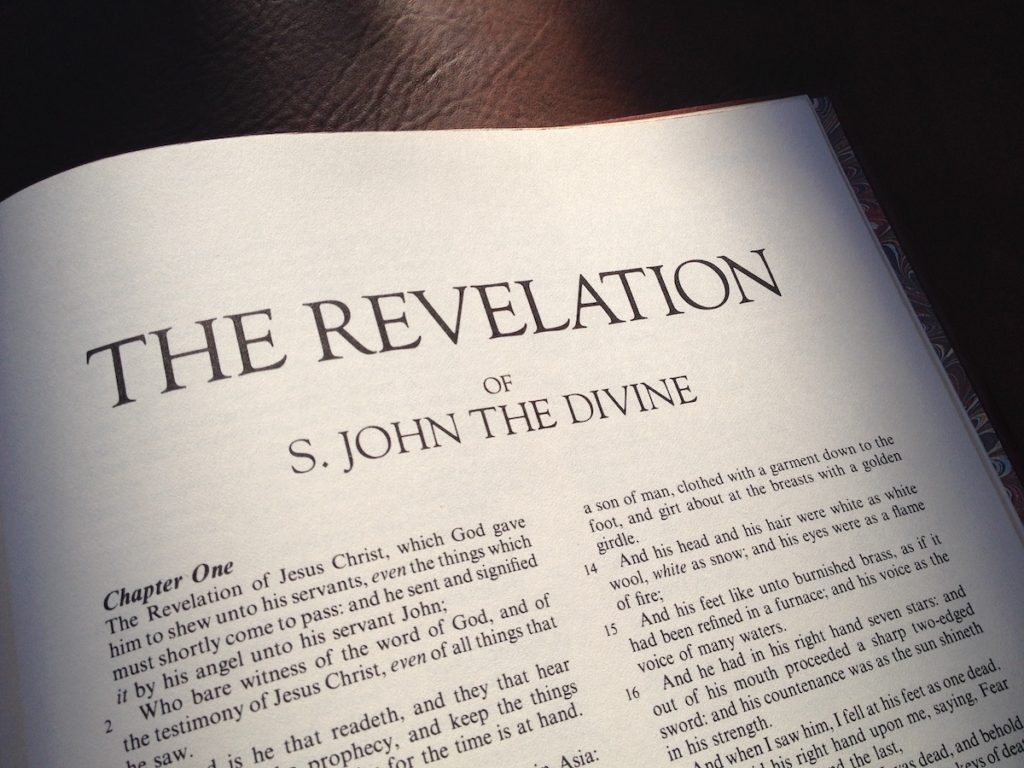
Revelation 9:1, A star fall from heaven. Likely this is referring to Satan when he is finally, once and for all, cast out of heaven. Yeshua spoke of this in Luke 10:18 when he likens Satan’s fall from heaven to a streak of lightening or a shooting star coming out of heaven.
Key to the bottomless pit. In the end times just prior to the second coming of Yeshua the Messiah, Elohim will give Satan the freedom to release evil spirits imprisoned in the abyss who will go forth to torment men as part of YHVH’s wrath against rebellious men. Perhaps this relates to the perennially enigmatic and troubling passage found in Jude 6 (cp. 1 Pet 3:18–20; 2 Pet 2:4). It seems that the evil, locust-like spirits may be the fallen angels that either rebelled with Lucifer and or were the ones who interacted with humans in the antediluvian world (Gen 6:4–6; Jude 6; 1 Pet 3:18–20; 2 Pet 2:4).
Revelation 9:1, Bottomless pit. (See notes at Deut 32:22; 2 Pet 2:4.) This Greek term (abussos phrear) indicates a large, cavernous hole, pit or abyss with a small opening or orifice like a well and is found several other places in the book of Revelation (Rev 9:2, 11; 11:7; 17:8; 20:1, 3). The bottomless pit is analogous to the deepest sheol in the Tanakh (Deut 32:22; Ps 86:13; Isa 14:15) or tartaroo (2 Pet 2:4), and is the place where the angels who rebelled in the time of Satan’s rebellion are being held in chains of restraint awaiting their judgment day (see 2 Pet 2:4). This is also where Satan will be cast at the beginning of the Millennium (Rev 20:1–3), and is to be distinguished from the lake of fire where Satan (and presumably his demons) will be cast at the end of the Millennium to be tormented forever (Rev 20:10).
This passage indicates that YHVH will open the bottomless pit and allow the evil spirits imprisoned therein to torment men for a period of time as part of his judgments against wicked men.
Revelation 9:2, Smoke. Wherever this pit is, it appears to be a place of fire, heat and smoke. The opening of the pit by Satan first releases so much smoke that it darkens the sun and air, if the terminology here is to be taken literally rather than figuratively. If the latter, then the smoke reference could refer to the global spiritual obfuscation that will occur. This phenomenon is the first sign that the demons of the pit are about to be released. After this follows their release and their tormenting of unredeemed humans. This is the wrath of Satan against humanity that precedes the wrath of Elohim. Since Elohim is permitting these demons to torment humans, it is, in reality, an extension of his judgment or wrath against the wicked. Since unsaved humans have rejected Elohim, and more and more are becoming enamored with and turning to outright Satan worship, Elohim his turning them over to the powerful forces of darkness they are seeking over him. These humans will discover what it is like to live in a hellish world where those they wish to serve have full reign to torment them—a world devoid of the protective grace of a merciful Creator.
Revelation 9:3, Locusts. These locusts do not fit the description of the Joel 1 locusts, which destroy all vegetation. Perhaps the vegetation of Joel 1 is a symbolic metaphor. If so, then is the vegetation of Rev 9:3 also symbolic? If so, how do we still reconcile these two passages, since the symbolic analogy of the one would be opposite the other?
These locusts are likely hybridized theriomorphic or animal-shaped descriptions of demonic spirits that have been released from the abyss where they have been kept imprisoned since their rebellion (see 1 Pet 3:19; 2 Pet 2:4), but who will be released to torment rebellious men as part of Elohim’s end time judgments.
Revelation 9:3, Power. (Gr. exousia) These scorpion, humanoid demons have the divine permission, physical and mental power, the authority and right, the ability and strength to torment unredeemed men.
Revelation 9:4, Those men…seal of Elohim. This is yet another proof that YHVH’s saints are on the earth during this period (the first half) of the wrath of Elohim, and that the pre-tribulation rapture theory is an unbiblical concept. What is the seal of Elohim? If we let Scripture interpret Scripture, this seems to be a reference to the sealing of the Set-Apart Spirit of the saints (e.g. John 6:27; Rom 4:11; 2 Cor 1:22; Eph 1:13; 4:30; 2 Tim 2:19 cp. Rev 7:3).
Revelation 9:5, Not kill…tormented. Torment (Gr. basanizo) means “to test the quality of a metal; to question by applying torture; to vex with grievous pains (of body or mind), to torment; to be harassed, distressed.” The demon-locust humanoid creatures can torment and torture unsaved humans, but not kill them. Those who have the seal of Elohim on their foreheads will be untouched. It seems that this will be an amazing opportunity for the sealed saints to evangelize the spiritually lost.
Scorpion. A scorpion can be a biblical idiomatic metaphor for a demonic spirits over which Yeshua gave his disciples authority to trample on as well as other all the powers of Satan (Luke 10:19).
Torment of a scorpion. The symptoms of most scorpions stings are relatively harmless, but the bark scorpion (Centruroides sculpturatus, also known as C. exilicauda), found in the American southwest, is an exception. This species of scorpion is venomous and can cause more serious injury and illness. Initial symptoms include immediate pain and sometimes numbness or tingling in the region stung. Serious symptoms, most common among children, include restlessness, muscle spasms, abnormal and random head, neck, and eye movements, anxiety and agitation, sialorrhea and diaphoresis. In some cases, a scorpion bite can prove fatal for children. In adults, tachycardia, hypertension, increased respirations, weakness, muscle spasms, and fasciculations may predominate.
Revelation 9:7, Locusts. This is likely some demonic, grotesque gargoyle-like demonic creature (or chimera) that is currently inhabiting the bottomless pit, but that will be released at this time for YHVH’s intended purposes.
Revelation 9:21, Sorceries. Gr. pharmakeia. Pharmakeia is a methodology to circumvent Elohim and to open the doorways into the supernatural. It is the mix of science along with magical arts, occultic or hidden, demonic, angelic or paranormal realm and medicine, potions, or herbs for sorcerous reasons to open the mind so that one is in contact with what is beyond the gate or the boundaries YHVH has established between the natural and supernatural (including the demonic) realm.
The Satanic spirits in Revelation chapter nine inhabit the pit, and those who resort to pharmakaia are coming into contact with spiritual entities either from the pit, or from the realm of darkness beyond this earth. Satan is both the angel of the bottomless pit (Rev 9:11) and the prince of the power of the air (Eph 2:2). There are spiritual gateways or portals down to the pit and out into the universe by which humans can contact beings from other dimensions. There are good and evil portals. YHVH revealed to Jacob a good portal or gateway to heaven at the site of the future Temple Mount when he dreamed of the ladder to heaven (Gen 28:10–16). Yeshua is the only gate or doorway to the Father in heaven (John 1:51). But there are evil gateways that men can open up illicitly through pharmakeia or drug induced states.
Biblical examples of individuals illicitly opening up gateways into the evil realm beyond man’s perception include the witch of Endor who summoned the dead (1 Sam 28:3ff) or demoms masquerading as dead people. We also see this with the slave girl who was possessed with a spirit of divination and who followed Paul in Macedonia (Acts 16:16–18).
Those who come under the influence of pharmakeia put themselves into a drug-induced state to activate gateways into the supernatural realm. Doing this is a form of rebellion against YHVH’s established boundaries that man is not supposed to cross. Witchcraft is also taking something holy and exploiting it for personal purposes. This is what Samuel accused Saul of doing when he kept the cattle he was supposed to kill, so that he could, at a later time, offer up an illicit sacrifices without going through the proper Levitical protocols. Samuel equated this act of rebellion with witchcraft (1 Sam 15:23). Saul had this proclivity, for he had offered up a witchcraft sacrifice once before (1 Sam 13:9–13). Samuel rebuked him for it, yet Saul was willing knowingly to repeat the same mistake again, which was strictly forbidden. Taking that which YHVH has ordained to be used legally one way and defiantly using it another way for one’s own selfish purposes is an act of rebellion and witchcraft.
Revelation 10
Revelation 10:1, Mighty angel [or messenger]. Likely this is Yeshua who is not an angel, but Elohim’s Heavenly Messenger.
Revelation 10:2, A little book. Likely referring to the book of Revelation.
Revelation 10:10, You must prophesy again. It appears that the Book of Revelation was written in two parts. Part one was likely written before A.D. 70 when the apostles, based on prophecies in Yeshua’s Olivette discourse, expected the end of the age to occur followed by the second coming. Part two was likely written toward the end of John’s life at the end of the first century. If these conjectures are correct, then Revelation part one ends at the Rev 10:11 and Revelation part two begins at Rev 11:1. Part two is the fulfillment of Yeashua’s prophecy to John that he must prophesy again. (For more info on this subject, see Restoring the Original Bible, pp. 327–330 by Ernest L. Martin and Beyond Acts, pp. 294–299, by Paul R. Finch).
Revelation 11
Revelation 11:3, One thousand two hundred and sixty days. This calculates out to be exactly three-and-one-half years on 360 day year. For a 365.24 day year, this comes out to be 3.45 years.
Revelation 11:3–14, My two witnesses. There is much speculation as to who these two witnesses may be. Moses and Elijah seem to be the chief contenders for these two spots in the eyes of most people. However, we might do well to consider also Moses and Aaron as well.
YHVH Elohim used Moses and Aaron as his proxy to warn Pharaoh and Egypt before bringing his severe and final judgments upon that nation that would end up destroying it. Moses was in the place of Elohim, while Aaron was his prophet or spokesman (Exod 7:1).
Whoever the two witnesses will be, in the end times, history will likely repeat itself. YHVH will raise up the two witnesses of Revelation 11 who will, like Moses and Aaron, warn the world to repent just before YHVH pours out his final judgments that will bring down the Babylon the Great new world order system. This will result in redeemed Israel (or the saints) being completely set free from the spiritual “Egypt” of this world setting in motion the final redemption or second exodus of the scattered tribes of Israel back to the land of their inheritance, where they will join their brother Judah who has, to one degree or another, already returned.
Revelation 11:3, Sackcloth. The Greek word sakkos means “a receptacle for holding or carrying various things, as money, food, etc.; a course cloth, a dark course stuff made especially from the hair of animals; a garment of the like material, and clinging to the person like a sack, which was wont to be worn (or drawn over the tunic instead of the cloak or mantle) by mourners, penitents, suppliants and also by those who like the Hebrew prophets, lead an austere life.”
Revelation 11:31–12:2, The ark of his covenant…woman…being with child. As the ark of the covenant was the symbol of YHVH’s presence with his people Israel, which presence left the temple and Israel due to that nation’s apostasy prior to its conquest by Babylon, so the birth of Messiah speaks of YHVH’s glory returning to Israel. This is why John juxtaposes the ark and the birth of the Messiah in these verses. This is why Haggai encouraged the building of the second temple and prophesied,
‘and I will shake all nations, and they shall come to the Desire of All Nations, and I will fill this temple with glory,’ says YHVH of hosts.… The glory of this latter temple shall be greater than the former,’ says YHVH of hosts. ‘And in this place I will give peace,’ says YHVH of hosts.” (Hag 2:7, 9)
Revelation 11:19–12:1–2, 4–5, The ark of his covenant…her Child. The juxtapositioning in this passage of the heavenly ark of the covenant and the birth of the Messiah is more than an interesting coincidence as Micahel Heiser points out. “The ark was the central symbol of God’s presence with Israel. The birth of the [Messiah] in Rev 12:1–7 was John’s way of saying that the presence of God had indeed returned to earth in the form of the Child, the Messiah,” (Reversing Hermon, pp. 65–66).
Revelation 4–8: Natan’s Commentary Notes

Revelation 4
Revelation 4:3, Jasper…sardius stone. Jasper is brick red in color and sardius (also called sardine or carnelian) is red orange in color. Both have quartz as their base mineral mixed with other minerals to give the color. The face of Yeshua also shines like the sun (Rev 1:16); therefore, his face radiates a brick, red-orange color.
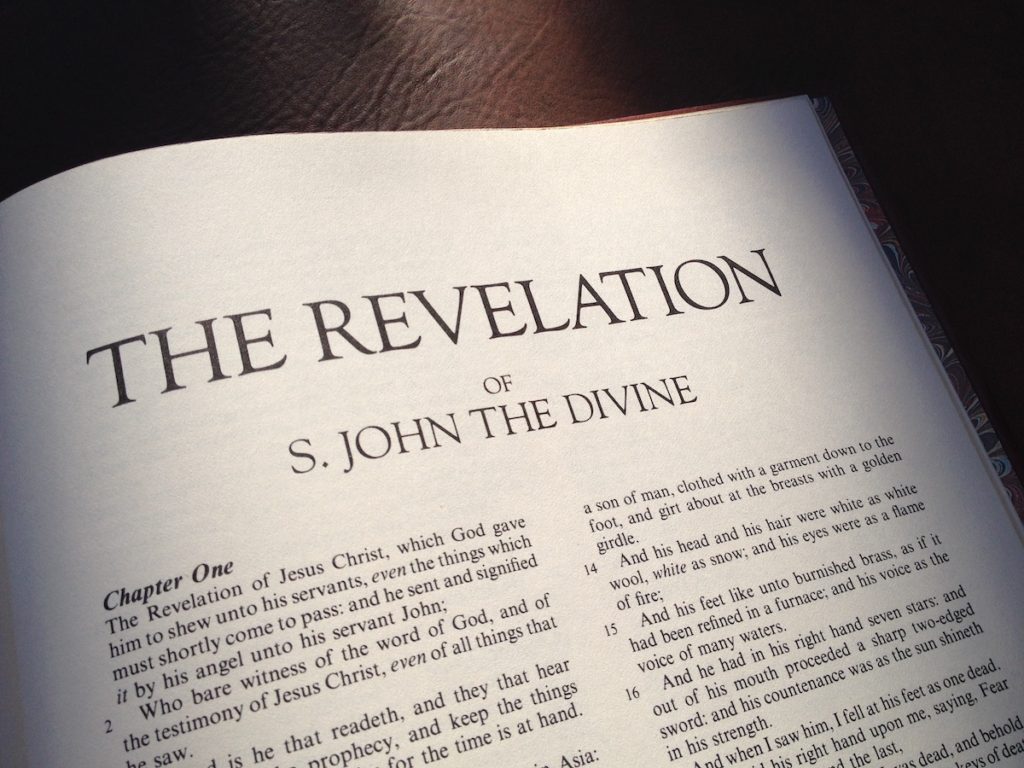
Rainbow. The throne of Elohim is surround by a rainbow. He is bathed in light, a biblical metaphor for truth. That light is split like a prism into the seven main colors of the rainbow, but, in reality, there is an infinite number of color variations. This speaks to the fact that the truth of Elohim is simultaneously gloriously beautiful and infinitely unsearchable in the multiplicity of its dimensions.
Like an emerald. The rainbow isn’t a typical earthly one, though, since it has a greenish hue to it. Green is the color signifying life.
Revelation 4:8, Holy, holy, holy. We need to shift our thinking to see that holiness not love is the primary or most notable attribute of YHVH Elohim. On what basis can we make such a bold assertion, since it flies in the face of what most Christians teach and believe? The answer is simple. In the throne room of Elohim the seraphim constantly cry, “holy, holy, holy” in reference Elohim and not “love, love, love” (Isa 6:3; Rev 4:8). Certainly, the Scriptures reveal that YHVH is love (1 John 4:8,16), but this is an attribute of his holiness. It would behove us to thoroughly study the scriptural concept of holiness as applied to YHVH. It is more convenient for sinful men to focus on YHVH’s love rather than on his holiness. To the carnal mind, love seems to excuses sin more, while holiness seems to demand more accountability and repentance before a just and righteous Elohim. On the basis of Elohim’s love, we feel that we can come into relationship with him “just as we are.” On the other hand, holiness convicts us of sin and demands that we repent of it if we are to enter into relationship with our Creator. To subscribe to false concepts about the nature and character of Elohim is to create a god in our own image, which is humanism and idolatry. To the degree that we subscribe to false concepts about him is to the degree that he cannot use us for his purposes.
Revelation 6
Revelation 6:2, White horse. In this a reference to the end times Muslim Mahdi Antichrist? Also, it is interesting to not that Muhammad’s horse, name Buraq, was also white.
Revelation 6:9, Under the altar…souls. Souls under the altar, in biblical Hebraic thought, is another way of saying that when you die, your soul dies too and goes into the grave of the earth or ground along with your body awaiting the resurrection when your body and soul (i.e. your personality—your mind, will and emotions) will be reunited with your personal spirit or divine essence that goes back to heaven when you die.
The altar is a poetic metaphor for the earth. Remember that the Bible says that heaven is Elohim’s throne and earth is his footstool (Isa 66:1; Matt 5:35; Acts 7:49). For example, the altar in the tabernacle was constructed of a pile of rocks placed on the bare earth and the blood of sacrificed animals was poured out on the earth. To me, the phrase “under the altar” (Rev 6:9) speaks of the human body being buried under or in the earth when they die where they await the resurrection.
We know that souls are not immortal; they don’t go to heaven when a person dies, contrary to what the church teaches—a false teaching they picked up from the Greek philosophers, not from the Tanakh!
On the contrary, the Tanakh tells us that the soul that sins dies (Ezek 18:4) and goes into the grave (Ps 16:10). Yeshua’s soul died when he went into he grave (Ps 16:10; Isa 53:12), but his spirit (his breath and his personal spirit) went up to heaven to be received of his Father (Luke 23:46) as did Stephen’s (Act 7:59). The same is true for all humans (Eccl 12:7).
The idea that the altar is the earth is further corroborated in Jewish thought. The Jewish sages teach us that the four horns on the four corners of the altar of sacrifice in the tabernacle symbolically represent the four corners of the earth. “[T]he expanse of the earth is more than a huge altar, dedicated to God” (The ArtScroll Tehilim/Psalms Commentary on Ps 118:27), and at death, the soul is not immortal, but simply goes into the grave with the body awaiting the resurrection (Pss 16:10; 49:15; Ezek 18:4).
Moreover, if the soul were immortal, than the lie the serpent told the first humans about not dying after going against Elohim’s instructions (i.e. committing sin) would be true wouldn’t it (Gen 3:4)?
Revelation 6:12–7–14, Great earthquake…four angels…wind…great multitude. See notes at Ezek 37 cp. Matt 24:29–31.
Revelation 7
Revelation 7:2, Seal of the living Elohim. What is the seal of God (Rev 7:3)? A seal is a signature, stamp, sign, brand or identification mark signifying ownership. A seal in the forehead symbolizes that the one who has the mark is completely yielded and subservient to the one who placed the mark. The concept of sealing believers is mentioned several times in the Scriptures.
Revelation 7:5–8, The 12 tribes of Israel. Why is the tribe of Dan not mentioned? (See notes at Matt 16:13.) It is also interesting to note the Ezekiel in his description of the apportioning of the Promised Land to the 12 tribes during, presumably, the millennial period, mentions the tribe of Dan (Ezek 48:1–2) and he even has a gate in the New Jerusalem name for him (Ezek 48:32). Obviously despite Dan’s apostasy, YHVH still has a loving heart for his lost and scattered children and is able to redeem them from the spiritual darkness in which they have been trapped.
Revelation 7:6, 8, Manasseh…Joseph. Why is Manasseh and not Ephraim mentioned? If Joseph encompasses both tribes, then why is Manasseh mentioned? Perhaps it’s because Ephraim was the birthright tribe with the double blessings, and therefore took the place of Joseph.
Revelation 8
Revelation 8:11, Wormwood. There is much speculation as to what this wormwood star is. One consideration is that Satan is the star who fell from heaven (Luke 10:18 cp. 12:9 and Isa 14:12). He is the archenemy of YHVH who has led men into rebellion against his Torah by perverting the Word of Elohim as he did at the tree of knowledge with Adam and Eve. In the Tanakh, the term wormwood is used as a poetic metaphor for the curses that come upon the people of YHVH when they forsake his Torah (Jer 9:13–15; Deut 29:18). The star in this verse falls upon one-third of the fresh waters. Waters can be taken as a metaphor for the peoples of the earth (Rev 17:15). Interestingly, one-third of the earth’s population professes to be Christian, which holds as a fundamental tenet the rejection of the Torah.
Introduction to the Book of Revelation
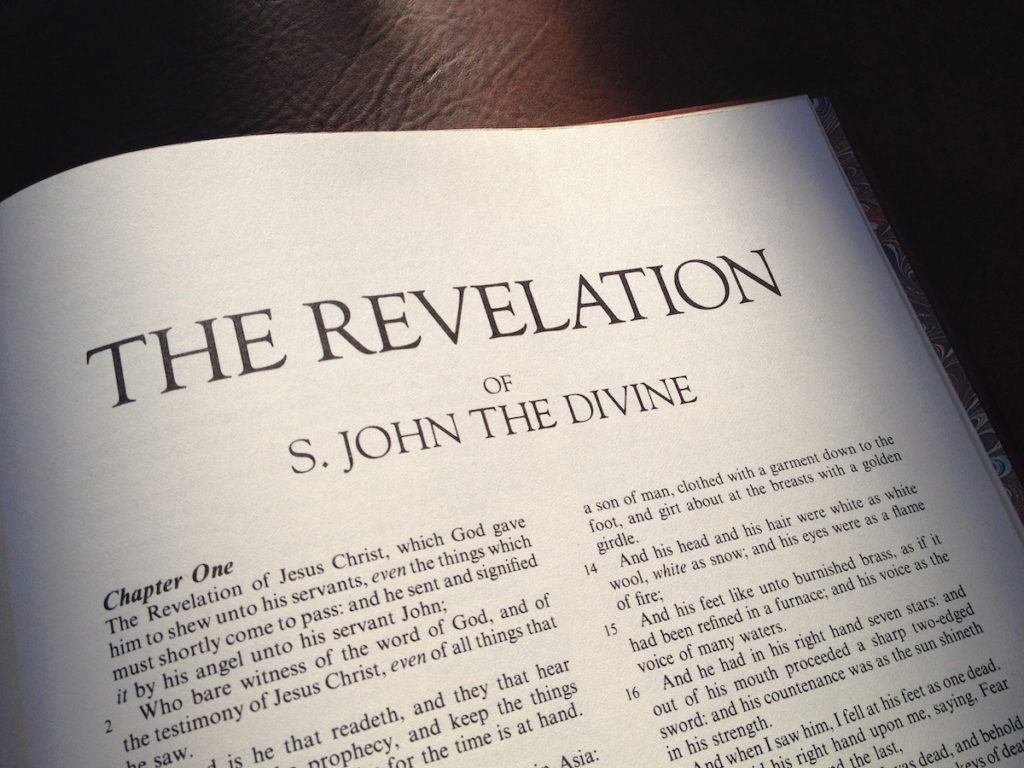
The Koine Greek name for the Book of Revelation is apokalupsis from which our English word apocalypse derives, is a word that in the minds of most people conjures up visions of horrific and cataclysmic events in which there is war, political and environmental upheaval involving mass death and destruction. This idea is a misnomer however. Though the Book of Revelation indeed foretells of a cataclysmic end times scenario, the Greek word apokalupsis literally means “laying bear, making naked; a disclosure of truth, instruction concerning things before unknown, manifestation, appearance,” and hence our English name for this book: Revelation. This meaning is made clear in the first verse of this same book.
The Revelation of Yeshua the Messiah, which Elohim gave unto him, to shew unto his servants things which must shortly come to pass; and he sent and signified it by his angel unto his servant John.
The Book of Revelation is just that—a revelation of things to come to pass, which Yeshua is making known to his servants (plural). This includes you and me.
Although, I don’t claim to have all or even much understanding pertaining to this book, I here share with you what I enlightenment I have been given to this point on several key topic. This is simply my understanding to this point until YHVH by his Spirit gives us more understanding. Until then, may we remain as little children, pale in hand, on the seashore of the vast ocean of YHVH’s unfathomable wisdom and knowledge in faith waiting for him to fill our buckets with more of his divine revelation.
What Should Be Our Perspective on the Book of Revelation?
On another note, there are those who champion the view that events of the Book of Revelation are primarily in the past tense. That is to say, Revelation records the events leading up to and following the destruction of the Jewish temple and Jerusalem in A.D. 70. The view that the events of Revelation were mostly fulfilled in the first century is called the preterist view, and those who support this position draw our attention to verses which point to the immediacy of the prophecies of the book being fulfilled—to events which must “shortly take place” (i.e. Rev 1:1, 3; 22:6, 10).
The problems with this view are several. To make it work, most of the prophecies of the book have to be allegorized. As such, preterists believe that little if anything Revelation says can be taken literally. The purpose of Revelation, they say, was to comfort the churches in Asia Minor in light of the persecutions they were enduring (Rev 1:4). While much in Revelation is obviously allegorical, to say that it all is, is simply applying a broad brush approach and, in my opinion, denies some of the basic rules of biblical interpretation. My approach is to take what the book says to be literal, unless the context or passages elsewhere in the Scriptures give us reason to interpret it symbolically.
The second major objection I have to the preterist view is that since most scholars agree that John wrote this book in the last decade of the first century, this view would make John’s Book of Revelation a record of history, as opposed to a prophecy “of things which must shortly come to pass,” which is contrary to the book’s purpose as the first verse of the book clearly states. The preterist view cannot accommodate this reality unless scholars can prove that John wrote all of his book before A.D. 70, a date which is at odds with the records of the early church fathers, which place the date of the books writing in the 90s.
Why I’m Not a Preterist
Preterism is the Christian eschatological (understanding of end time events) concept that all Bible prophecy has already been fulfilled including Yeshua’s Matthew 24 Olivet Discourse and those prophecies in the book of Revelation.
I will say that it is my belief that preterism is an over simplistic concept that often fails to take into account several things:
a) The dual or even multiple fulfillments of certain biblical prophecies. Even the Jewish sages who’ve been studying the OT scriptures for millennia recognize the often cyclical nature of some prophecies in that many have multiple fulfillments. It seems that the preterist looks at prophecy in more a linear (timeline) Greco-Roman perspective rather from the Hebraic, more cyclical nature in which the Bible was written. This is to their detriment and causes them to have a skewed view of biblical prophecy.
b) That some prophecies have been indeed fulfilled, while others are yet to be fulfilled, and yet still others have been fulfilled and will be fulfilled in a greater sense in the future.
c) They often fail to fully understand historical events. The preterist view of Olivet Discourse Matt 24 is a prime example. While it appears that some of the things Yeshua predicted in Matthew 24 have an AD 70 fulfillment, other events listed in this chapter clearly don’t unless you “cram it to fit and paint it to match” as preterists like to do. This they do by applying some things in a given prophecy in a literal sense, and then when a prophecy can’t be interpreted literally to fit historical events, they simply allegorize it away by making the prophecy symbolic. In my opinion, this is a dangerous approach and is playing fast and loose with the Bible. You can make the Bible say virtually anything you want it to say when you do this. This is a hermeneutical problem where they make the Bible say what they want it to say (eisegesis) instead of letting the Bible speak for itself (exegesis).
d) The preterist usually fails to understand Israel in history, who the people of Israel are, the Torah, and the nature of covenants from a Hebraic, full biblical context. It seems to me that preterism works if you take a more Catholic view of the Bible and history, not a Hebraic view.
e) Preterists seems to not understand the nature of biblical prophecy in that some prophecies are short range, some are mid-range, and some are long range in that they haven’t been fulfilled yet. What’s more, they fail to understand that even as biblical prophecy was divinely revealed to the prophet in the first place, so understanding its fulfillment requires a divine revelation as well. The Holy Spirit revealed the prophecy in the first place, and will reveal its interpretation often after the event has occurred. For example, the greatest OT prophetic concept of all — those prophecies pointing to the coming of the Messiah — wasn’t fully understood by the disciples until after his death. The disciples still thought he was Messiah the Conquering king rather than the Suffering Servant. Little by little, they came to understand that he came to redeem men from sin, and not (at least at that time) to set up his earthly kingdom after having defeated his physical enemies.
In reality, the truth of the Bible falls between the two extremes of preterism and non-preterism. Some biblical prophecies in the context of history have already been fulfilled, while others have been partially fulfilled, and still others have yet to be fulfilled. This is what I believe. It’s an overly simplistic and quite frankly, to my mind at least, a naive and spiritually immature approach to say that all prophecy has been fulfilled or that all prophecy is yet to be fulfilled. Understanding biblical prophecy isn’t quite that simple. For example, in all my extensive readings of the writings of the ancient Jewish sages, I’ve never seen a preterist viewpoint with regard to the OT prophecies. This ought to tell us something.
My sense is that the notion preterism arose from the antisemetic attitudes and doctrines of the early church fathers who wanted to excise all understanding of the Scriptures from a Jewish perspective and replace the Jews with the church when it comes to prophecy. If this is the case, then preterism in some of its more virulent and strident permutations could even be considered to be an antisemtic philosophy! This almost makes it a doctrine of demons. How can we take all scriptural reference to the Jews and to greater Israel and be so subjective and ego-centric as to apply them to the exclusively to the Gentile church?
Overview of the Book of Revelation
This book is not the revelation of John, but the “revelation of Yeshua the Messiah” (Rev 1:1). As such, it reveals Yeshua in a variety of ways as indicated in the outline below.
Continue readingMy Notes on Revelation Chapters 20–22 on the Millennium and Eternity

Revelation 20
Revelation 20:1, Bottomless pit. (See notes at Deut 32:22; 2 Pet 2:4; Rev 9:1. Also see notes at Isa 14:18–21.)
Revelation 20:4, A thousand years. This is but one of six references in the Bible to the Millennium lasting for one thousand years. The other references are found in the surrounding verses (vv. 2, 3, 5, 6, 7). Even then, some biblical students still question the idea of the Millennium and categorize it as a NT concept only and, therefore, feel they can relegate it to the realm of the allegorical. An understanding of the prophetic implications of the seventh day Sabbath should settle this question once and for all. In traditional Jewish thought, the seven days of creation picture the time man will be on this physical earth. Six days (for six days or six thousand years) man does his own work, while on the seventh day (or one thousand years) he rests and fellowships with Elohim. This is a picture of the millennial rest, which the Jewish sages have long called the Messianic Era, which is yet to come. The Millennium is not uniquely a Christian or NT concept, but is rooted in Judaism going back before the Christian era. For example, the writer of Hebrews juxtaposes the Sabbath and the Millennium in Hebrews chapter seven when he compares Joshua taking the Israelites into the Promised Land with Yeshua taking the saints into the Sabbath, millennial rest of our spiritual inheritance.
Revelation 20:5, The rest of the dead. This phrase is a parenthetical thought. Before and after this phrase, the author is discussing those who will be part of the first resurrection, which occurs at Yeshua’s second coming. Later in the same chapter, John goes on to discuss what happens to the rest of the dead (vv. 12–13).
Revelation 20:7–21:1, Events after the Millennium. The events in these verses appear to be chronological and occur after the Millennium. In Rev 20:2ff John seems to be receiving a pre-millennial flashback vision. (See my discussion on these verses.)
Revelation 20:8, The four corners. These rebels who will inhabit the millennial earth have removed themselves as far as possible from Jerusalem, which is the seat of King Yeshua’s rule and is at the center of the earth.
Revelation 20:9, Fire came down from heaven. If the New Jerusalem, the seat of Yeshua’s millennial government, is hovering over the earthly Jerusalem during the Millennium, then this is the source of the fire or Yeshua’s judgment against the rebels who dare to defy his divine governance.
Revelation 20:10, The devil…lake of fire. (See notes at Deut 32:22; 2 Pet 2:4; Rev 9:1.)
Tormented forever.The devil as a spirit either can only be contained, but not destroyed meaning Elohim is not all-powerful, or, more likely, Elohim will allow the devil to exist, though in a place of torment, as an on-going example and testimony to his sovereign greatness and power over evil.
Continue readingRevelation 3-4: Natan’s Commentary Notes

Revelation 3
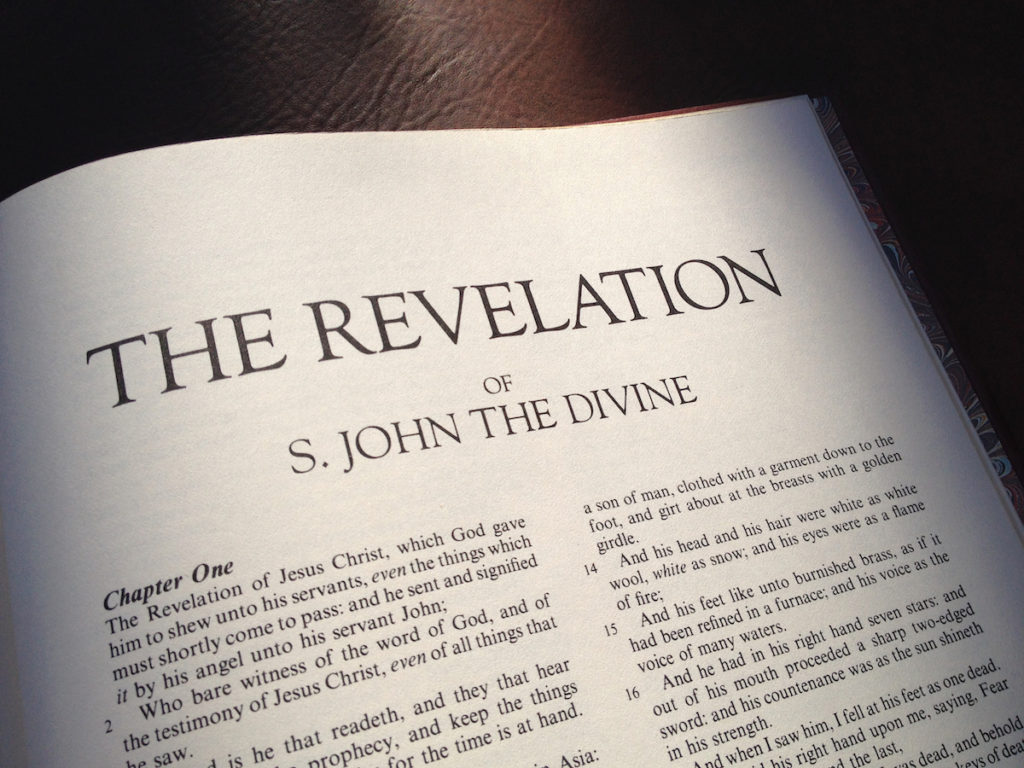
Revelation 3:9, Worship/bow down before your feet. This scripture has puzzled many. Who are these saints before which those who are of the synagogue of Satan will at some time in the future bow down in worship? Who are those who are of the synagogue of Satan? First, the saints are wearing crowns (verse 11) and they have the name of Elohim written upon them (verse 12). We know that a group of saints will be ruling with Yeshua in his millennial kingdom (Rev 1:6; 5:10). These same saints will be part of the first resurrection (Rev 20:6), which occurs at Yeshua’s second coming. Not all saints will be kings and priests. There are levels of rewards (and responsibilities) in YHVH’s kingdom depending on how obedient one has been to his Torah-commandments. This Yeshua teaches in Matthew 5:19. Some saints will be the least in his eternal kingdom, while some will be the greatest depending on their level of Torah-obedience. Similarly, Yeshua identifies two groups of saints in his Parable of the Ten Virgins (Matt 25:1–13)—the wise saints and the foolish saints. The wise virgins will go into the wedding supper of Yeshua, and presumably will become his bride, while the foolish ones will be left outside. In Revelation chapter three, Yeshua further identifies two groups of believers: those who are spiritually lukewarm and those who are spiritually hot (Rev 3:14–22). It is not a stretch to connect those who are spiritually on fire in Laodicea with those in Philadelphia who have been faithful to his commands, who will be given a crown and who will be worshipped.
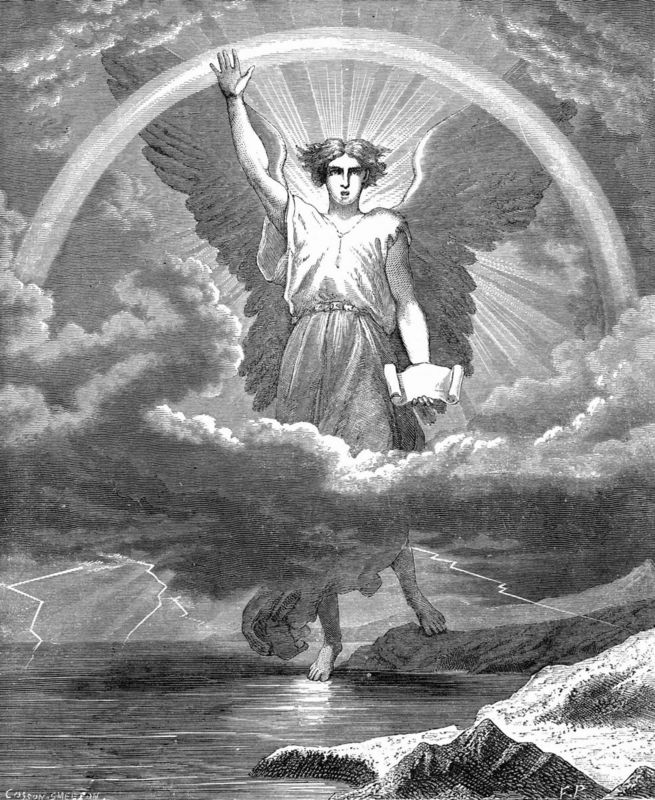
Can we further identify these faithful saints who will be worshipped (or before whom the knees of lower order saints will bend, which is the actual meaning in the Greek of the word worship) in Yeshua’s kingdom? They have crowns and are thus ruling as kings and have the name of Elohim written on them. Similarly, the 144 thousand have the seal of YHVH’s name on them (Rev 7:3–4 and 14:1), and they keep his Torah commandments and have the testimony or faith of Yeshua (Rev 14:12). These are the likely candidates for being those Yeshua describes in Matthew 5:19 who will be the greatest in the kingdom of Elohim, and who others will worship (Rev 3:9).
Why would people be worshipping (or bending the knee before) these glorified, resurrected and kingly saints? There are several possible explanations here for this. First, the bride of Yeshua will be ruling and reigning with Yeshua as a queen (in ancient Jewish thought) or like a king (under Yeshua, who is the King of kings, as presented in the book of Revelation). Second, Paul teaches us that those saints who will be resurrected will be literally adopted (Rom 8:15, 23; 9:4; Gal 4:5; Eph 1:5) into the family of Elohim as sons or children of YHVH Elohim.
In Galatians, Paul speaks of redeemed believers being both Abraham’s seed and being adopted as sons of Elohim (Gal 3:29; 4:5). Elsewhere where the term adoption is used in the Testimony of Yeshua, it is in reference to our relationship with our Heavenly Father, not with our earthly father, Abraham. The redeemed are therefore, sons or the seed of Abraham, yet adopted into the family of Elohim as spiritual sons (Rom 8:15, 23; Eph 1:5). In other words, the saints are literal sons or seed (physically) of Abraham, yet adopted sons (spiritually) of YHVH. This adoption will be finalized or completed at the resurrection when the saints receive their spiritual bodies (Rom 8:23), for then they will be like him for they shall see him as he is (1 John 3:2).
Elohim is a plural word in Hebrew and can mean many things, and has many usages in the Scriptures. It is used to refer to the Creator, YHVH Elohim, as well as to angels, kings, judges and humans in authoritative capacities. When the saints are resurrected, they will be as Elohim and will be part of the family of Elohim, though they will not be Elohim, who has existed forever and is the Creator of all things. It appears that these saints will be worshipped, not as YHVH Elohim, but as his created sons who have been elevated through the process of redemption, sanctification, glorification and adoption into members of the family of Elohim.
Revelation 3:14, The church at Laodicea.
Will you pass the test and make it into YHVH’s kingdom?


